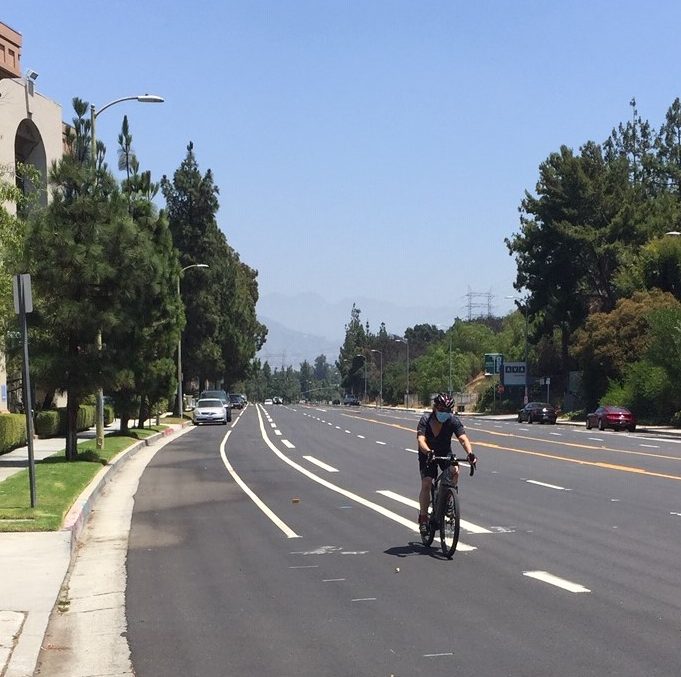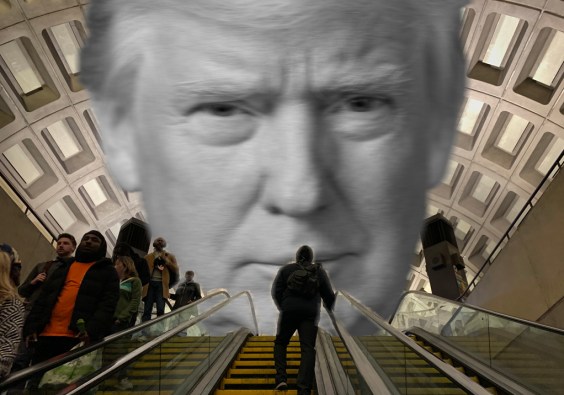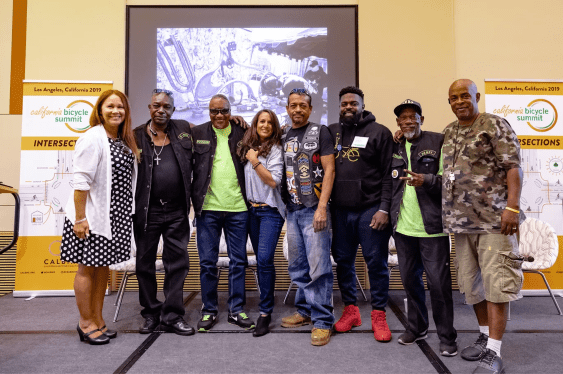Recently, there has been a frustratingly continuous drumbeat of planned bikeways being left off of large-scale southern California construction projects.
There are a host of reasons for the omissions. Numerous agencies are involved, though it’s mostly Metro, Caltrans, and L.A. City Public Works Department bureaus. The effect is the same: missed opportunities for interconnected facilities that would move the southland closer to becoming a safe and convenient place to get around by bike.
Some of these sorts of omissions fly below the radar; there are just too many projects to keep track of. Below is a list of examples that have surfaced this year, listed in rough chronological order:
- Metro – E (Expo) Line: Metro opened the $2.5 billion E Line in 2016. Despite explicit instructions from the Metro board to include a parallel bikeway in the Expo right of way, Metro jettisoned four sections of the bikeway. That means bike riders experience a wretched 0.3-mile gap through Culver City. The city of L.A. is finally closing the three-quarter-mile Northvale Gap, now anticipated to be complete nine years after the rail line opened. Bikeway-free stretches remain at each end of the right-of-way: between USC and Exposition Park, and on portions of Colorado Avenue in the city of Santa Monica.
- L.A. City Bureau of Engineering – Spring Street Bridge: The city spent $50+million widening this bridge. Bike lanes were explicitly included in city council approvals, and depicted in renderings. Nevertheless, the widened bridge opened in 2018 sans bike lanes. Apparently in deference to City Councilmember Gil Cedillo, the BOE has to this day failed to stripe bike lanes, instead repeatedly pushing back the completion date – and by doing so, failing to make existing bridge deck space available to both drivers and cyclists.
- L.A. City Bureau of Engineering – Riverside Drive Bridge: The city spent $12.8 million widening this bridge. Bike lanes were included in environmental documents. But, apparently in deference to Caltrans (whose 134 Freeway offramps connect to an adjacent freeway bridge), when the widened bridge opened in 2020, bike lanes were omitted.
- L.A. City Bureau of Engineering – Sixth Street Viaduct: The city is currently spending $588 million to replace a historic bridge with a wider and straighter one. Early plans featured a protected bikeway, though final plans omitted the protection in favor of just a painted bike lane, so motorists can easily pull over to the side, which blocks the bike lane.
- Metro – Regional Connector subway: Metro is spending $1.9 billion to build a new subway under downtown Los Angeles. Construction ripped open several streets, which are now being rebuilt as the project nears completion. Though Metro is putting in some new bikeways as part of the related Eastside Access Improvements project, mostly it is restoring downtown streets back to the way they were in 2014 when construction got underway. The rollback ignores bike lanes that were approved in the city of L.A.’s Mobility Plan for Second Street, and fails to add easy, opportunistic bike lanes on sufficiently wide downtown roadways including 3rd, Flower, Hope, Alameda, and Temple Streets – which would make great much-needed first/last mile connections to the new subway stations.
- Metro – Rosecrans/Marquardt Grade Crossing: This month Metro approved starting construction on this $156 million rail/street grade crossing in the city of Santa Fe Springs. The project widens Rosecrans Avenue to make space for approved bike lanes, but the construction plan inexplicably does not include actually striping the bike lanes. The new lanes would connect with nearby bikeways: existing bike lanes on Rosecrans in La Mirada and the existing La Cañada Verde Creek path in Santa Fe Springs.
- Metro and Caltrans – 605 Freeway Valley Boulevard Interchange: This $35 million freeway widening project, still in the final approval stages, includes adding “a widened shoulder to provide a future bike lane along Eastbound Valley Boulevard” but stops short of actually striping the bike lane, despite the street being the only direct connection between a residential neighborhood and the San Gabriel River path. Caltrans’ environmental documents claim the (not included) bike lane will reduce greenhouse gas emissions.
- Metro – Van Nuys Boulevard light rail: Despite L.A. City’s Mobility Plan designating bike lanes on Van Nuys Boulevard, Metro’s planned nine-mile $2+ billion East San Fernando Valley Light Rail Transit Project is not going to add those bike lanes, but will instead preserve existing car lanes.
- Metro – North Hollywood to Pasadena Bus Rapid Transit: L.A.’s Mobility Plan designates protected bike lanes on Colorado Boulevard through Eagle Rock. As part of its ~$300 million BRT project there, Metro’s initial proposal would have eliminated existing bike lanes. Metro is still selecting between two alternatives, one with protected lanes (“Single Travel Lane,” inspired by the community’s Beautiful Boulevard response) and another (“Two Travel Lanes”) that includes unprotected buffered bike lanes.
Bikeways are cheap, especially in comparison to building rail and widening roads, highways, and bridges. The monetary cost to include a basic protected bikeway is minuscule in these projects; adding a buffered or striped bike lane is essentially the cost of the paint. These large-scale projects typically offer once-in-a-life time opportunities to extend bikeway networks.
Instead, Southern California rarely misses an opportunity to miss an opportunity, resulting in the sort of crappy non-network described by Streets for All’s Michael Schneider in a recent L.A. Times editorial:
Imagine if the 101 almost connected to the 405, and the 405 almost connected to the 10, and in the gaps, drivers faced a dirt road with potholes. How many cars would drive on those roads? Yet we ask the same of people on bikes today. Unless someone can get to where they need to go and feel safe for the entire journey, many won’t bother. That requires a network of protected bike lanes that connect to other protected bike lanes, crisscrossing the city.
What is exasperating is that agencies already have approved bike plans – often the result of a great deal of advocacy pressure from cyclists. L.A. City adopted its Mobility Plan in 2015. Metro approved its Complete Streets Policy in 2014 (and received national recognition for it.) That policy builds on Metro’s 2014 First/Last Mile Strategic Plan. Even Caltrans recently released its own Statewide Complete Streets Policy.
Bike riders press to get bikeway facilities included during project planning processes, often to be told that there just isn’t space or funding or staffing or something-or-other for bikeways. Then, even when agencies (often reluctantly) approve bikeways as part of larger plans, they are dropped in full or in part during construction – as if bicycling is just not a valid way to get around, and as if the safety of bicyclists just isn’t quite worth following through on.
One pernicious double standard here is that Metro/Caltrans/L.A. don’t do these sorts of downgrades for other modes. Metro never built a light rail line with four gaps. With few exceptions, Caltrans connects its freeways into a network. But bikeways drop left and right.
As Schneider’s editorial urges, it’s way past time to change these practices:
Los Angeles has long incentivized cars above all other modes of transportation. Climate-friendly transportation should be the new default, with incentives and infrastructure investment to match. It makes no sense to install bike-share stations without building a network of safe bike lanes. It’s foolish to pour billions into new subway lines but also permit five-story parking podiums attached to new residential buildings above the stations.
As the climate emergency spirals out of control, hillsides burn, refugees flee weather disasters, and public health declines, it is time for Southern California to get serious about implementing already-approved bikeway plans. And the time to do much of it is when the facilities are relatively cheap and easy to add to ongoing, larger-scale projects.






